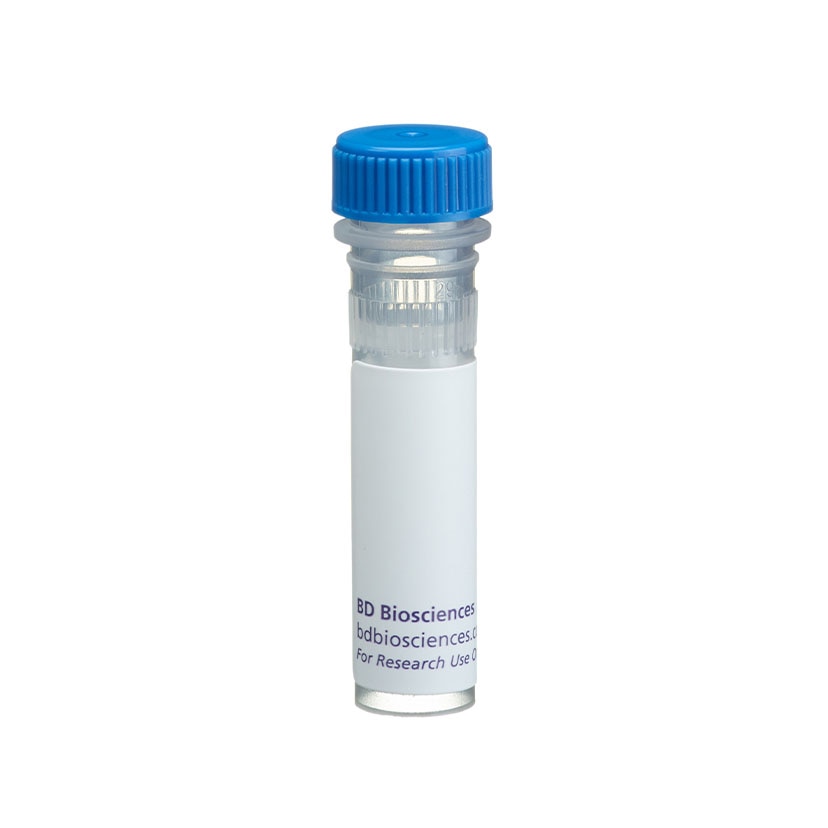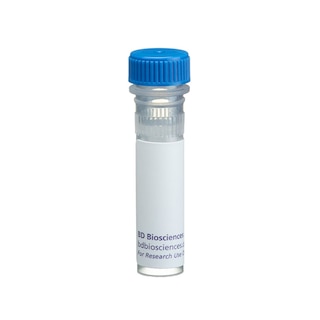-
Reagents
- Flow Cytometry Reagents
-
Western Blotting and Molecular Reagents
- Immunoassay Reagents
-
Single-Cell Multiomics Reagents
- BD® OMICS-Guard Sample Preservation Buffer
- BD® AbSeq Assay
- BD® Single-Cell Multiplexing Kit
- BD Rhapsody™ ATAC-Seq Assays
- BD Rhapsody™ Whole Transcriptome Analysis (WTA) Amplification Kit
- BD Rhapsody™ TCR/BCR Next Multiomic Assays
- BD Rhapsody™ Targeted mRNA Kits
- BD Rhapsody™ Accessory Kits
- BD® OMICS-One Protein Panels
-
Functional Assays
-
Microscopy and Imaging Reagents
-
Cell Preparation and Separation Reagents
-
Training
- Flow Cytometry Basic Training
-
Product-Based Training
- FACSAria Product Based Training
- FACSMelody Product-Based Training
- FACSLyric Product-Based Training
- FACSCanto Product-Based Training
- LSRFortessa Product-Based Training
- FACSymphony Product-Based Training
- FACSDuet Product-Based Training
- HTS Product-Based Training
- BD FACSDiscover™ S8 Cell Sorter Product Training
-
Advanced Training
-
- BD® OMICS-Guard Sample Preservation Buffer
- BD® AbSeq Assay
- BD® Single-Cell Multiplexing Kit
- BD Rhapsody™ ATAC-Seq Assays
- BD Rhapsody™ Whole Transcriptome Analysis (WTA) Amplification Kit
- BD Rhapsody™ TCR/BCR Next Multiomic Assays
- BD Rhapsody™ Targeted mRNA Kits
- BD Rhapsody™ Accessory Kits
- BD® OMICS-One Protein Panels
-
- FACSAria Product Based Training
- FACSMelody Product-Based Training
- FACSLyric Product-Based Training
- FACSCanto Product-Based Training
- LSRFortessa Product-Based Training
- FACSymphony Product-Based Training
- FACSDuet Product-Based Training
- HTS Product-Based Training
- BD FACSDiscover™ S8 Cell Sorter Product Training
- Singapore (English)
-
Change country/language
Old Browser
This page has been recently translated and is available in French now.
Looks like you're visiting us from United States.
Would you like to stay on the current country site or be switched to your country?
BD Transduction Laboratories™ Purified Mouse Anti-ApoE
Clone 32/ApoE (RUO)

Western blot analysis of ApoE on a Jurkat cell lysate (Human T-cell leukemia; ATCC TIB-152) (left). Lane 1: 1:1000, lane 2: 1:2000, lane 3: 1:4000 dilution of the mouse anti-ApoE antibody.
Immunofluorescent staining of SK-N-SH cells (Human neuroblastoma; ATCC HTB-11) (right). Cells were seeded in a collagen coated 384-well imaging plate (Material # 353962) at ~ 8,000 cells per well. After overnight incubation, cells were stained using the methanol fix/perm protocol (see Recommended Assay Procedure) and the mouse anti-ApoE antibody. The second step reagent was Alexa Fluor® 488 goat anti-mouse Ig (Invitrogen). The image was taken on a BD Pathway™ 855 or 435 imager using a 20x objective and merged with BD AttoVision™ software. This antibody also stained SH-SY5Y (Human neuroblastoma; ATCC CRL-2266), C6 (Rat glioma; ATCC CCL-107) and U87 MG cells (Human glioblastoma cells; ATCC HTB-14) using the methanol fix/perm protocol (see Recommended Assay Procedure). The Triton-X 100 protocol is not recommended.


Western blot analysis of ApoE on a Jurkat cell lysate (Human T-cell leukemia; ATCC TIB-152) (left). Lane 1: 1:1000, lane 2: 1:2000, lane 3: 1:4000 dilution of the mouse anti-ApoE antibody.
Immunofluorescent staining of SK-N-SH cells (Human neuroblastoma; ATCC HTB-11) (right). Cells were seeded in a collagen coated 384-well imaging plate (Material # 353962) at ~ 8,000 cells per well. After overnight incubation, cells were stained using the methanol fix/perm protocol (see Recommended Assay Procedure) and the mouse anti-ApoE antibody. The second step reagent was Alexa Fluor® 488 goat anti-mouse Ig (Invitrogen). The image was taken on a BD Pathway™ 855 or 435 imager using a 20x objective and merged with BD AttoVision™ software. This antibody also stained SH-SY5Y (Human neuroblastoma; ATCC CRL-2266), C6 (Rat glioma; ATCC CCL-107) and U87 MG cells (Human glioblastoma cells; ATCC HTB-14) using the methanol fix/perm protocol (see Recommended Assay Procedure). The Triton-X 100 protocol is not recommended.

Western blot analysis of ApoE on a Jurkat cell lysate (Human T-cell leukemia; ATCC TIB-152) (left). Lane 1: 1:1000, lane 2: 1:2000, lane 3: 1:4000 dilution of the mouse anti-ApoE antibody.
Immunofluorescent staining of SK-N-SH cells (Human neuroblastoma; ATCC HTB-11) (right). Cells were seeded in a collagen coated 384-well imaging plate (Material # 353962) at ~ 8,000 cells per well. After overnight incubation, cells were stained using the methanol fix/perm protocol (see Recommended Assay Procedure) and the mouse anti-ApoE antibody. The second step reagent was Alexa Fluor® 488 goat anti-mouse Ig (Invitrogen). The image was taken on a BD Pathway™ 855 or 435 imager using a 20x objective and merged with BD AttoVision™ software. This antibody also stained SH-SY5Y (Human neuroblastoma; ATCC CRL-2266), C6 (Rat glioma; ATCC CCL-107) and U87 MG cells (Human glioblastoma cells; ATCC HTB-14) using the methanol fix/perm protocol (see Recommended Assay Procedure). The Triton-X 100 protocol is not recommended.


BD Transduction Laboratories™ Purified Mouse Anti-ApoE

Regulatory Status Legend
Any use of products other than the permitted use without the express written authorization of Becton, Dickinson and Company is strictly prohibited.
Preparation And Storage
Recommended Assay Procedures
Western blot: Please refer to http://www.bdbiosciences.com/pharmingen/protocols/Western_Blotting.shtml
Bioimaging:
Methanol Procedure for a 96 well plate:
Remove media from wells. Add 100 µl/well fresh 3.7% Formaldehyde in PBS. Incubate for 10 minutes at room temperature (RT). Flick out and add 100 µl/well 90% methanol. Incubate for 5 minutes at RT. Flick out and wash twice with PBS. Flick out PBS and add 100 µl/well blocking buffer (3% FBS in PBS). Incubate for 30 minutes at RT. Flick out and add diluted antibody (diluted in blocking buffer). Incubate for 1 hour at RT. Wash three times with PBS. Flick out PBS and add second step reagent. Incubate for 1 hour at RT. Wash three times with PBS. Image sample.
Triton-X 100 Procedure for a 96 well plate: (Not recommended: if desired, refer to the following hyperlink for the methodology: http://www.bdbiosciences.com/pharmingen/protocols/Bioimaging_Certified.shtml )
Product Notices
- Since applications vary, each investigator should titrate the reagent to obtain optimal results.
- Please refer to www.bdbiosciences.com/us/s/resources for technical protocols.
- Caution: Sodium azide yields highly toxic hydrazoic acid under acidic conditions. Dilute azide compounds in running water before discarding to avoid accumulation of potentially explosive deposits in plumbing.
- Source of all serum proteins is from USDA inspected abattoirs located in the United States.
Companion Products


Apolipoprotein E (ApoE) is an important constituent of plasma lipoproteins and a ligand for several lipoprotein receptors. Receptor binding studies indicate a region of binding activity corresponding to amino acids 140-160. ApoE2 is produced mainly in the liver, but also in several peripheral tissues like brain, adrenal glands, kidney, and macrophages. Studies suggest that ApoE plays a role in neuron growth and homeostasis, as well as the pathology of Alzheimer's disease. Three major forms of ApoE (E2, E3, and E4) have been described in human plasma, with ApoE3 being the most common. These isoforms differ by only one or two amino acids. Some abnormal forms of ApoE2 are associated with the genetic abnormality type III hyperlipoproteinemia, which is, in part, due to the impaired clearance of cholesterol-rich remnant proteins.
Development References (3)
-
Allan CM, Walker D, Taylor JM. Evolutionary duplication of a hepatic control region in the human apolipoprotein E gene locus. Identification of a second region that confers high level and liver-specific expression of the human apolipoprotein E gene in transgenic mice. J Biol Chem. 1995; 270(44):26278-26281. (Biology). View Reference
-
McLean JW, Elshourbagy NA, Chang DJ, Mahley RW, Taylor JM. Human apolipoprotein E mRNA. cDNA cloning and nucleotide sequencing of a new variant. J Biol Chem. 1984; 259(10):6498-6504. (Biology). View Reference
-
Wang L, Schuster GU, Hultenby K, Zhang Q, Andersson S, Gustafsson JA. Liver X receptors in the central nervous system: from lipid homeostasis to neuronal degeneration. Proc Natl Acad Sci U S A. 2002; 99(21):13878-13883. (Biology: Immunohistochemistry). View Reference
Please refer to Support Documents for Quality Certificates
Global - Refer to manufacturer's instructions for use and related User Manuals and Technical data sheets before using this products as described
Comparisons, where applicable, are made against older BD Technology, manual methods or are general performance claims. Comparisons are not made against non-BD technologies, unless otherwise noted.
For Research Use Only. Not for use in diagnostic or therapeutic procedures.